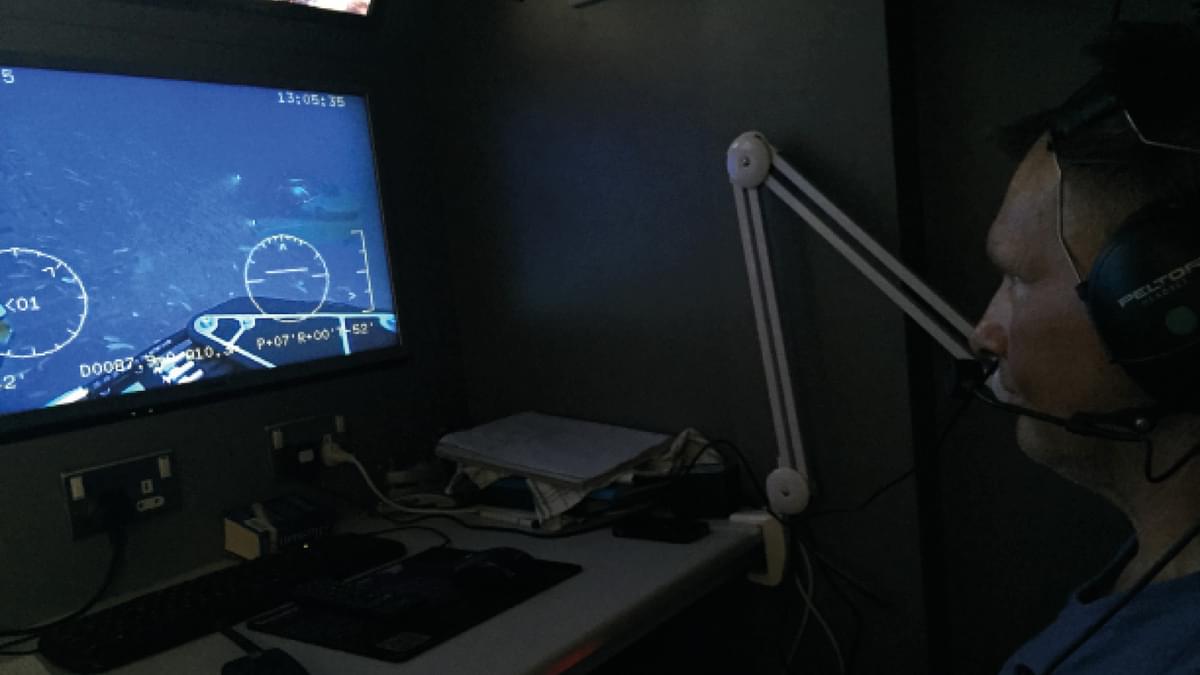
ROV Scientist
In this activity you will learn about how scientists use Remotely Operated Vehicles (ROVs) to collect samples from the seafloor. A ROV scientist will use ‘remote controls’ to direct the ROV from the surface vessel. In this activity you will need to demonstrate your ability to collect samples from the sea floor.
Preparation
Prepare your resources, each group will need three trays, a tea towel, a selection of objects of different shapes, textures and sizes, e.g. lasagna sheet, frozen pea, raw egg, cracked egg (in a bowl), grain of rice, loaf of bread, fruit, vegetables, balloon (filled with air) and a balloon (filled with water). You will also need a selection of different kitchen utensils e.g. wooden spoon, BBQ tongs, a ladle, a toothpick, a clothes peg, straw, spoon, fork and chopsticks. You can find full details on the activity page.
Session steps
1. Introduction (5 mins)
Jamie will open the session with a welcome and brief introduction to the expedition and any shout-outs to registered classes.
In this activity students will observe how difficult the job of the ROV is, especially considering the environment it works in and how it is controlled.
2. Subject knowledge (10 mins)
Jamie will then explain that this activity is all about control. When you attempt to move the samples using the kitchen utensils, you are collecting samples the same way the ROV would. Consider the focus and concentration needed to collect the samples using tools not designed for that purpose.
3. Activity time (15 mins)
Jamie will then begin demonstrating the activity and students can follow along in real-time. To set up the activity select six objects and place them on a tray. Then select an additional six objects and place them on another tray and cover these with a tea towel. These are your deep-sea sample sites. Finally place a third tray to the side of these with a range of six utensils next to it.
Students will have three minutes to transfer the deep-sea samples to the collection book. Each sample moved safely equates to the students earning one point. Once the three minutes is up students should reflect on how useful the utensils were and whether they would make any changes.
At this point, you can submit your students’ questions via the live chat.
4. Q&A and conclusion (15 mins)
After completing the activity Jamie will be able to answer pre-submitted questions and take part in the live chat. At the end of the broadcast, Jamie will suggest some other activities you might like to try and what's coming up in the rest of Submarine Live 2019.
Speakers

Jamie Buchanan-Dunlop
Executive Director, Encounter Edu
Brought to you by


ROV Scientist
In this activity you will learn about how scientists use Remotely Operated Vehicles (ROVs) to collect samples from the seafloor. A ROV scientist will use ‘remote controls’ to direct the ROV from the surface vessel. In this activity you will need to demonstrate your ability to collect samples from the sea floor.
Preparation
Prepare your resources, each group will need three trays, a tea towel, a selection of objects of different shapes, textures and sizes, e.g. lasagna sheet, frozen pea, raw egg, cracked egg (in a bowl), grain of rice, loaf of bread, fruit, vegetables, balloon (filled with air) and a balloon (filled with water). You will also need a selection of different kitchen utensils e.g. wooden spoon, BBQ tongs, a ladle, a toothpick, a clothes peg, straw, spoon, fork and chopsticks. You can find full details on the activity page.
Session steps
1. Introduction (5 mins)
Jamie will open the session with a welcome and brief introduction to the expedition and any shout-outs to registered classes.
In this activity students will observe how difficult the job of the ROV is, especially considering the environment it works in and how it is controlled.
2. Subject knowledge (10 mins)
Jamie will then explain that this activity is all about control. When you attempt to move the samples using the kitchen utensils, you are collecting samples the same way the ROV would. Consider the focus and concentration needed to collect the samples using tools not designed for that purpose.
3. Activity time (15 mins)
Jamie will then begin demonstrating the activity and students can follow along in real-time. To set up the activity select six objects and place them on a tray. Then select an additional six objects and place them on another tray and cover these with a tea towel. These are your deep-sea sample sites. Finally place a third tray to the side of these with a range of six utensils next to it.
Students will have three minutes to transfer the deep-sea samples to the collection book. Each sample moved safely equates to the students earning one point. Once the three minutes is up students should reflect on how useful the utensils were and whether they would make any changes.
At this point, you can submit your students’ questions via the live chat.
4. Q&A and conclusion (15 mins)
After completing the activity Jamie will be able to answer pre-submitted questions and take part in the live chat. At the end of the broadcast, Jamie will suggest some other activities you might like to try and what's coming up in the rest of Submarine Live 2019.
Speakers

Jamie Buchanan-Dunlop
Executive Director, Encounter Edu
Brought to you by



